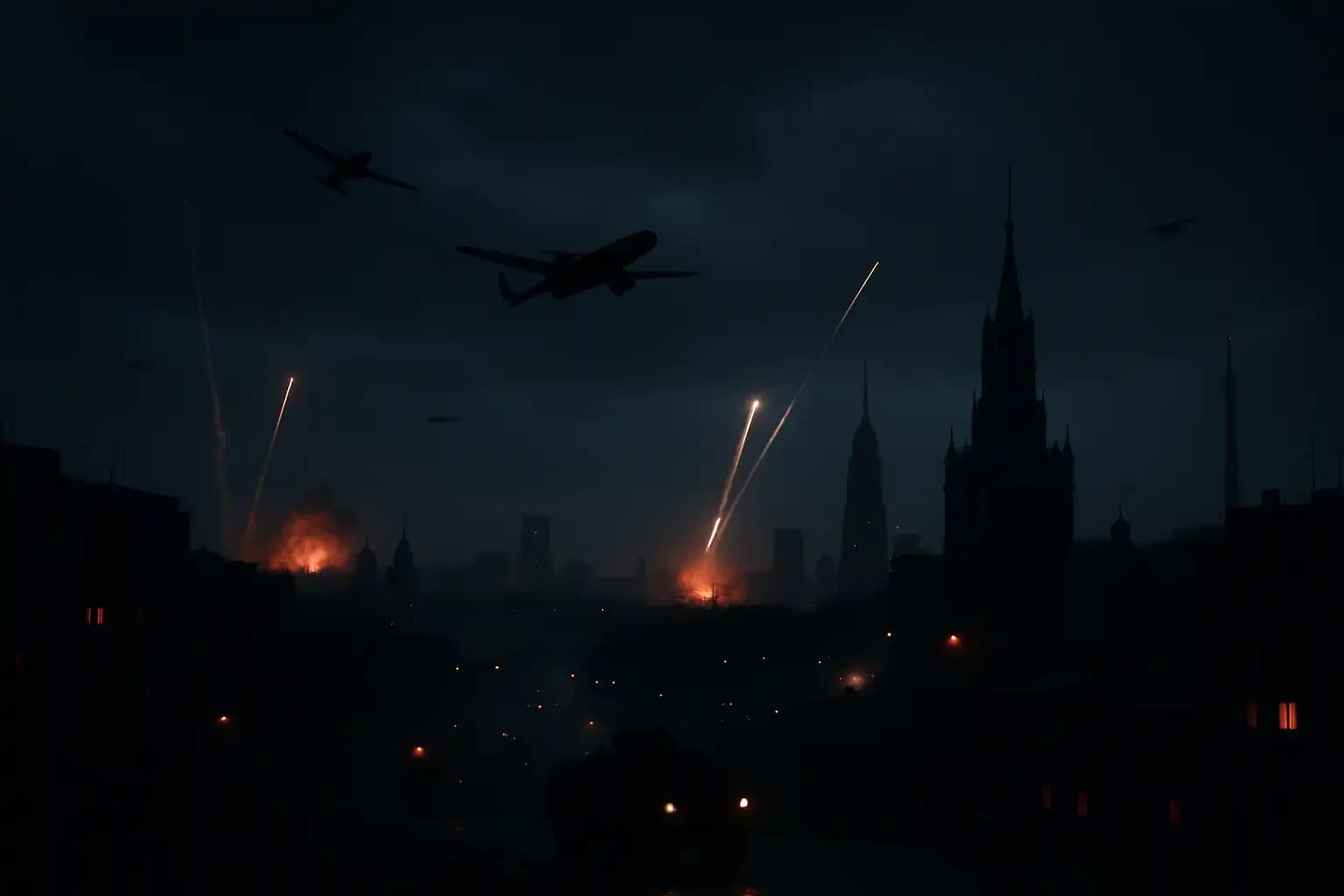The night sky over Moscow feels tense. A series of drone and missile strikes plunged parts of Russia’s capital into darkness, revealing the vulnerability of even the most fortified cities in modern warfare. Dramatic footage circulated globally, but behind each explosion lies a struggle between the Kremlin and its adversaries, where panic and readiness coexist.
Massive Strikes: Drone Swarms and Moscow’s Blackout
On October 31, 2025, darkness enveloped Moscow’s Zhukovsky district after officials declared an “emergency situation in the power system.” Reports from UNN and local assessments detailed damage to multiple electrical substations, with social media showcasing the widespread blackout. The attack coincided with what Ukrainian outlets claimed was one of the largest drone swarms to date—up to 700 UAVs targeting Moscow’s critical energy infrastructure and beyond.
As authorities rushed to restore order, footage of the darkened city with its eerily empty boulevards became viral symbols of vulnerability. This isn’t the first time conflict has spread into Russia: analysts have long warned, as seen in reports on past urban emergency threats, that the modern battlefield knows no borders.
Missile Drills and Putin’s Demonstrative Response
Just a week before the blackout, the Kremlin aimed to showcase strength through televised military exercises, with General Valery Gerasimov briefing President Putin on the coordinated drills. According to Reuters, Russia launched a suite of missiles from ground launchers, submarines, and aircraft, including intercontinental ballistic missiles. Putin framed these actions as necessary for readiness against existential threats from NATO and Ukraine.
The saber-rattling intensified when Russian officials threatened to provide nuclear-capable missiles to allied countries in the Western Hemisphere, echoing Cold War tactics. These escalatory measures, highlighted in recent multi-front conflict briefings, aim for both deterrence and psychological warfare against global rivals.
A War of Escalation: Putin’s Rhetoric, NATO Moves, and Nuclear Threats
As Russia endures attacks and energy disruptions, President Putin’s stance has become sharper. He repeatedly warns Western leaders that supplying Ukraine with long-range missiles—like Tomahawk cruise missiles—signals a “new stage of escalation.” According to CNBC, if NATO-supplied weapons strike Russian territory, Moscow would respond “resolutely in a mirror way.” Experts see this rhetoric as an attempt to fracture Western unity, pressure adversaries, and prepare for the next phase of confrontation.
This nuclear signaling fits a longstanding pattern outlined in previous doomsday protocol reports and draws lessons from escalation management throughout the Russo-Ukrainian War.
Why It Matters: Cyber, Kinetic, and Psychological Warfare Redefine The Battlefield
As the West considers its next steps, Russia’s strategy—combining missile displays, cyber operations, and information campaigns—shapes perceptions and policies. Experts argue that the October blackout, mass drills, and nuclear threats signal a perilous new chapter. While these events may minimally impact battlefield positions, their psychological shockwaves are widespread, evident in escalating emergency measures on both sides.
For context, these developments connect with previous global war risk forecasts, energy security analyses, and scenarios involving multi-domain assaults. If the digital and physical realms are intertwined, then the frontline now stretches from Ukrainian trenches to Moscow’s skyline.
For relentless, unvarnished analysis as events unfold, follow Unexplained.co. War has changed—and this serves as your reality check.





